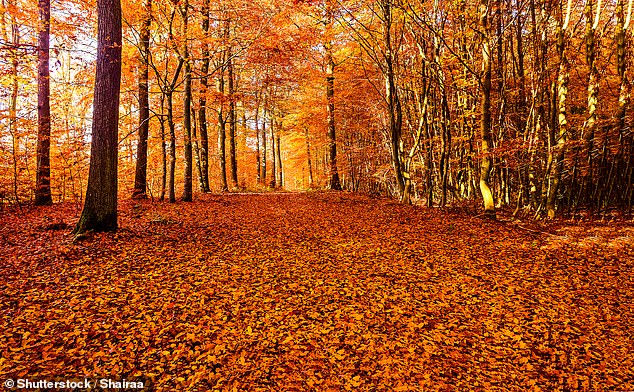New forecast predicts an unusual fall season for nearly all 50 US states
If you were looking forward to cooler, less humid weather after a record summer, you’re out of luck.
Experts say nearly all 50 U.S. states are likely to experience warmer than normal temperatures this fall.
Temperatures in the US range from 20 to 30 degrees during the three months, but the weather forecast indicates that it will be more summer than fall across the country.
Experts say the unusually warm forecast could be a result of La Niña, the periodic cooling of sea surface temperatures in the central-eastern Pacific Ocean.
But global climate change is also likely playing a role: average temperatures continue to rise every year.
The National Oceanic and Atmospheric Administration (NOAA) has released its seasonal forecast for September through November, showing higher than average temperatures across the country, while regions generally experience cooler weather.
According to the National Oceanic and Atmospheric Administration (NOAA) forecast for September to November, tThe Four Corner states (Colorado, Utah, Arizona and New Mexico) and New England have the greatest chance of a warm fall, with a 60 to 70 percent chance of above-average temperatures.
NOAA considers monthly temperature or precipitation data to be above or below average if it falls within the upper or lower third of measurements taken for a given month between 1991 and 2020.
Average fall temperatures vary by state, but in the Four Corners states, “normal” temperatures typically range between 40 and 90 degrees Fahrenheit.
In New England, temperatures typically range between 30 and 70 degrees Fahrenheit.
However, parts of the West Coast are not more likely to experience warmer than average fall temperatures, including parts of Washington, Oregon, California, Idaho and Alaska.
Typical fall temperatures for these states range between -20 and -70 degrees Fahrenheit.
Temperatures are expected to be above normal in the Midwest region. Temperatures are also expected to be above average in northern states, including North and South Dakota, and some Great Lakes states.
In the Midwest, fall temperatures typically range from 32 to 70 degrees Fahrenheit.
Several states in the central US can also expect a drier than average fall. New Mexico and southwestern Texas in particular are likely to experience lower than average rainfall.
In New Mexico, the average monthly rainfall from September through November ranges from 0.85 to 1.54 inches. In Texas, it ranges from 2.96 to 3.88 inches.
According to NOAA, there is a 50 to 60 percent chance that parts of these states will receive more precipitation than average this fall.
Meanwhile, the East Coast and parts of Oregon, Washington and Alaska are likely to see above-average rainfall.
Autumn weather across the country can be affected by La Niña, which sets in sometime between September and November.
It occurs once every three to five years and causes autumn weather to be warmer and drier than average.
But climate change is also driving record-high temperatures in the US, experts say.
This year is already on track to dethrone 2023 as the warmest year ever recorded in Earth’s history, according to a report from Copernicus, the European Union’s climate service.
The fall forecast comes hot on the heels of a record-breaking hot summer.
According to NOAA’s forecast for June through August, at least 20 states in the Northeast and Midwest were in warm zones, where temperatures were above normal.

In the US, it’s fall, when the weather starts to cool as winter approaches, but most of the country will still be feeling the heat of summer
The extreme heat was the result of El Niño, which was caused by a shift in the distribution of warm water in the Pacific Ocean around the equator. Normally, this ocean carries drier, warmer air toward the northern U.S.
By June, most of the US had already experienced at least one major heat wave, with heat warnings in place for millions of people.
July offered no respite, with average temperatures significantly above average across much of the western and eastern US.
Dozens of locations in the western and Pacific Northwest, including Nevada, Palm Springs and Medford, tied or broke previous heat records with temperatures well above 100 degrees Fahrenheit.
July was also the hottest day ever on Earth.
